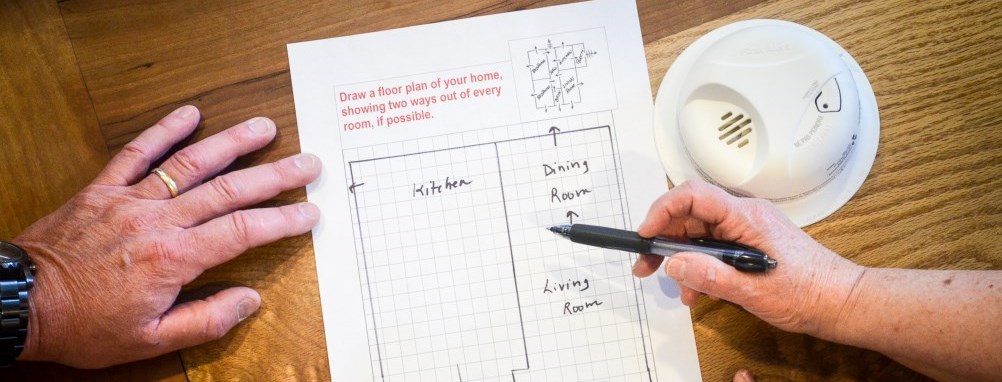Fire safety plans set guidelines for fire safety in your business or home. This includes assessing and maintaining safety equipment, auditing the building and identifying fire hazards. It also includes training occupants about how to respond during a fire.
When do you need a fire safety plan?
Emergency planning is mandated by the Ontario Fire Code for certain buildings. You need to have a fire safety plan if the building is a:
- Care, assembly or detention facility
- Residential building with more than 10 occupants
- Business or service building with more than 300 occupants
- Mercantile building with more than 300 occupants
- High hazard industrial building with more than 25 occupants
- Medium hazard building with more than 100 occupants
- Low hazard building with more than 300 occupants
If you are unsure about whether or not your business or building requires a fire safety plan, contact Milton Fire & Rescue Services.
Develop a fire safety plan
There is a 10-step process to help you prepare a fire safety plan. Review these steps and start making your fire safety plan.
Conduct a fire safety audit |
|
Before preparing a fire safety plan, conduct an audit to identify factors affecting fire safety. This includes an audit of:
|
Appoint supervisory staff |
| To make sure that your safety plan is followed, you must identify supervisory staff who are responsible for implementing the plan. These individuals will need additional training and have a complete understanding of the fire safety plan and how to respond in an emergency. |
Develop emergency procedures |
|
Your fire safety plan must include emergency procedures in case of a fire. This includes:
|
Create fire drill procedures and training |
| Training and practicing fire drills must be part of your facility’s preparedness plan. You can consult with Milton Fire & Rescue Services when creating fire drill procedures. Include these procedures in your fire safety plan. |
Maintain building facilities and fire protection equipment |
| The fire safety plan must contain a detailed schedule identifying the required checks, inspections and tests of all fire safety systems and features. |
Develop alternative procedures |
| Include a few alternative plans and procedures for special circumstances. For example, what is your emergency plan if the fire alarm system is shut down temporarily? How would you respond if the sprinkler system is temporarily shut down? Develop a plan to address these types of scenarios. |
Control fire hazards |
|
To identify and control common fire hazards, a designated person should perform a weekly walk-through of the facility. Examples of potential controlled fire hazards include:
|
Prepare a diagram and site plan |
| You need to create a diagram that shows the type, location and operation of all the building fire emergency systems. If your property is large and contains outdoor activities that may cause a fire access problem, they need to be included on the site plan. |
Get approval of your plan |
| Your fire safety plan must be approved by the Chief Fire Official. Contact Milton Fire & Rescue Services to get approval. |
Implement and maintain the fire safety plan |
| Once your fire safety plan has received approval, you need to ensure that it is available and accessible and that your staff follow through with the plan and receive all appropriate training. |
Contact Us



